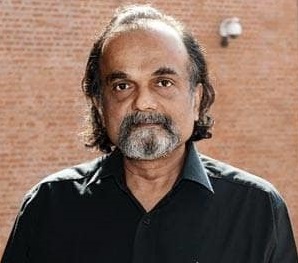Lalu Prasad and his team have been laying out transition path to reform from the mess that Indian Railways were in, steps that would most certainly pay off. The genius in discovering hidden operating leverage and overcoming slack in increasing the loading of wagons, extension of passenger trains, running trains faster, and turning around wagons seems very simple after the fact. Similarly, the re-working of freight rates to get back the traffic are all in the right direction.
The idea of pricing as something that needs to be dynamic and recognise the competition and capacity utilisation is simple enough in the commercial world.
But in the babudom of Railways higher cross subsides have always meant higher freight rates (even above revenue maximising tariffs) to disgorge much of the incremental traffic over the Eighties and Nineties on to the roads at great social cost. Now the baby steps to correct that absurdity have been taken and with coherence that is a welcome surprise.
The railways in sweating their assets better have found a way to raise a significant part of their funds for capex, and most interesting of all the funds are to be directed almost entirely to where the values are highest - in freight and in such passenger traffic where the Railways comparative advantage is the highest. Given the galloping demand for transportation that strategy would most certainly work and would give Railways the confidence to go ahead in the direction of commercialisation, and this is the most significant aspect of the budget. Putting Rs. 20,000 crore on a freight corridor and related requirements can never be a loss.
Even with large cost overruns the social benefit of this investment by doubling freight capacity over the next five years would be a big bang for a small amount. Remember that the cost of multi-laning a kilometre of highway is upwards of Rs 50 crore. The returns to well directed capex that can overcome critical shortages on a vast system is large, and LPY is showing that he can leverage the painful repressions of the past to create benefit i.e. to make reform a positive sum game.
The revenue focus in the current situation can be immensely rewarding since the bottom line is enhanced by revenue increase, the variable costs of doing so being almost negligible. Automatic upgradation of class as a measure of enhancing revenue is so simple but it took the railways a century to realise. With that the railways have moved out of their operational straitjacket and also left behind the status aspect of class.
Railways’ willingness to engage with private parties in mainstream business -containers- the most buoyant item of freight in India is also a remarkable change. Private monies at stake are necessary to overcome bottlenecks such as in the movement out of JNPT of containers that the current system seems to be bogged down with. Concor is too well entrenched to worry about the destruction of customer value that has been going on for the past five years or more despite the improvement of ports and many of the highways.
Competition can change that with monies to be made all round. The recognition of the quality aspect in freight services especially to attract high value freight is most notable.
Similarly the pricing of passenger services on the need to respond to the competition and to fill up seats. That blows to bits the given assumptions of cross subsidies as the basis for pricing. Mr Yadav has shown his strategy in not right away going for cutting out non-remunerative services, but in increasing revenue to layout the path of reform that is remunerative and also politically feasible.
If indeed these are the first crucial steps to tariff rationalisation, then the feed back effects of the same on the economy could be considerable. If the container traffic growth rises by even a per cent additionally from its current high rate of 16% or so, the economy can look forward to falling costs of transportation. India, remember, has very high tonne-mile costs in internal transportation when given its high density it should have had one of the lowest.
The moves to sell tickets through vendors would allow for Railways to slowly reduce (even if only through retirement) its largely wastefully engaged clerical staff, and even expand its operational staff.
The next steps would be to worry deeply about safety, further involvement of the private sector in services that add value, sweat out other non-operational assets, think logistically and multi-modally to make the railways a transportation company.
There is even more hidden potential to unblock vast capacities by reducing the variance of speeds on the Indian Railways. That would mean flexible and more powerful locomotives. That would be next operational challenge. With the flexibility in operations that Mr Yadav has ushered in there is much to hope for.
When in contrast the Chinese National Railways carries eight times more freight than does the Indian
http://www.financialexpress.com/fe_full_story.php?content_id=118652


